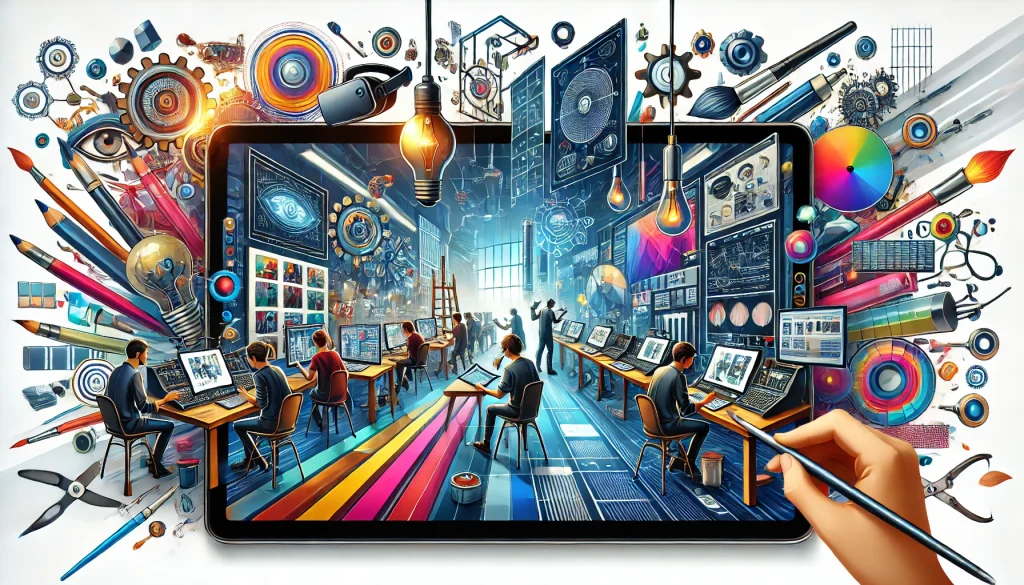In today’s world, digital artistry isn’t limited to photographs or videos — it’s part of a much bigger creative movement. From cinematic video edits to immersive digital experiences, technology has turned art and entertainment into one seamless universe of expression. Whether you’re enhancing a portrait in Lightroom or exploring new realms of interactive fun, creativity has become more dynamic and limitless than ever before.
In fact, This is one of the best places to enjoy modern casino entertainment. It perfectly reflects how digital innovation and design can merge to create experiences that feel vivid, responsive, and visually rich — much like the creative editing work we see in photo and video artistry today.
🎬 The Rise of Visual Storytelling in the Digital Age
Just a decade ago, editing a photo meant adjusting brightness or contrast. Today, tools like Snapseed, Lightroom, and PicsArt empower creators to tell stories visually — transforming simple images into moments that speak emotions.
What makes digital editing so special is the blend of technical precision and artistic instinct. Whether it’s balancing color tones or adding cinematic effects to videos, digital creators are shaping how we see and feel online. Every edited image becomes a canvas for personal expression, and every frame tells a deeper story.
The same principles drive the evolution of digital entertainment. The world of online media — from social platforms to interactive gaming — has embraced aesthetics as a core part of user experience. Vibrant visuals, intuitive design, and emotionally engaging content have become the foundation of everything that captures attention today.
🎮 When Design Meets Play: The Power of Interactive Art
Modern entertainment has become an art form in itself. Video games, streaming experiences, and interactive platforms rely on stunning visuals and user-centered design — elements that editors and visual creators understand instinctively.
Consider how immersive lighting, realistic textures, and smooth motion can turn a simple digital scene into something unforgettable. The creative decisions made by developers are remarkably similar to those made by photo and video editors: color palettes, contrast levels, timing, and emotion. Both worlds revolve around crafting experiences that look and feel just right.
This connection between artistry and interactivity has given rise to new creative industries, where the boundaries between “artist” and “entertainer” are fading. A digital creator today might be editing a travel vlog one day and designing virtual landscapes the next — both forms of visual storytelling that speak the same creative language.
🌟 Why Aesthetic Experiences Matter More Than Ever
In an age dominated by screens, people crave beauty and meaning. That’s why visual design has become a key ingredient across every digital platform. Whether it’s a music video, a lifestyle reel, or an online gaming interface, aesthetics can transform simple content into something emotionally resonant.
Aesthetic storytelling is not just about making things look good — it’s about evoking feeling. When you adjust tones in Lightroom or apply cinematic filters in PicsArt, you’re shaping how someone experiences that moment. The same principle applies to digital entertainment platforms that use design and motion to create emotional engagement.
As creative tools become more advanced, audiences expect more immersive visuals — sharper detail, better lighting, and more personalized interaction. The result? Digital experiences that feel alive, artistic, and deeply human.
🌐 The Future of Digital Creativity
The next frontier of creativity lies in fusion — where visual design, interactivity, and entertainment converge. We’re already seeing this in virtual production, AI-assisted editing, and the rise of creator-driven media.
Even the entertainment world is leaning heavily on visual design principles. Platforms are investing in aesthetics to keep users engaged — not just through gameplay or content, but through the entire look and feel of the experience. Visual storytelling and entertainment are no longer separate fields; they’re two sides of the same creative coin.
A great example of this cross-industry inspiration is how digital creators are learning from interactive platforms to build more engaging videos, reels, and short-form stories. The techniques overlap — from timing and rhythm to composition and lighting — proving that digital creativity is a universal skill set.
🖼️ Final Thoughts: Creativity Has No Boundaries
Whether you’re a video editor crafting cinematic transitions or an artist experimenting with visual effects, your work is part of a larger creative ecosystem. The same imagination that drives innovative photo edits also fuels the design of immersive entertainment experiences around the world.
And as technology continues to evolve, these creative worlds will only become more connected — blurring the lines between artistry, storytelling, and digital play. For those passionate about visual expression, this is the most exciting time in history to create, explore, and inspire.
To stay inspired by how creativity continues to shape our digital future, check out this insightful article from Adobe’s Creative Cloud Blog on how AI and visual design are transforming creative industries.

